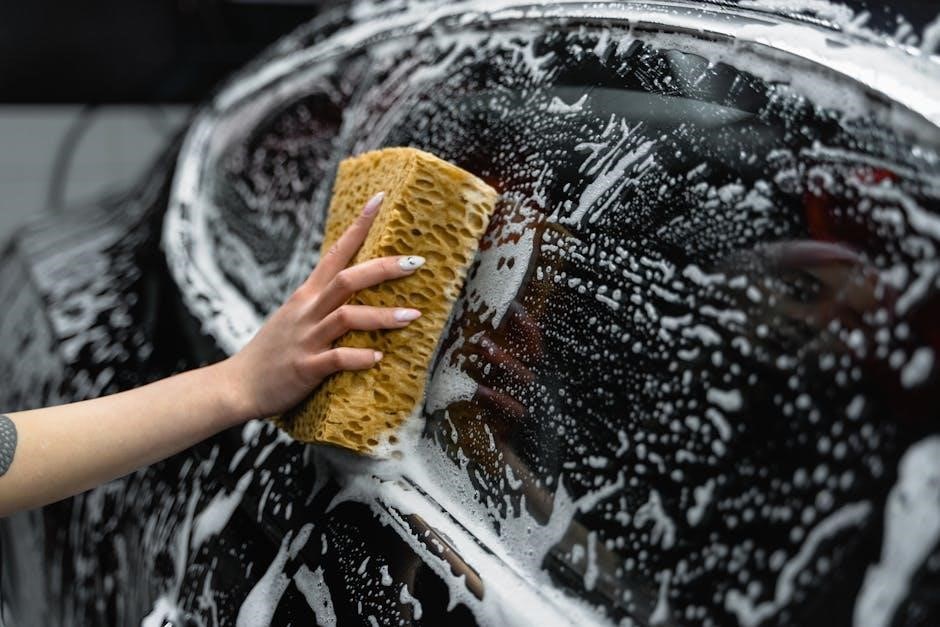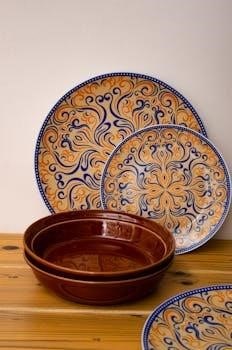Blade HQ’s steel guide serves as a helpful resource for individuals eager to understand different types of knife steel and their attributes. It offers a digestible overview, simplifying complex information for a wider audience.
Overview of the Guide’s Purpose
The primary aim of Blade HQ’s steel guide is to demystify the world of knife steels for both novice and seasoned knife enthusiasts. It seeks to provide a clear, concise, and accessible explanation of the various steel types, their unique properties, and how these properties influence a knife’s performance. Rather than overwhelming users with overly technical jargon, the guide strives to present the information in an easily digestible format, making it a valuable learning tool for anyone looking to understand the intricacies of knife steel. While not claiming to be a definitive or all-encompassing resource, the guide serves as an excellent starting point for understanding key factors like edge retention, corrosion resistance, and toughness, empowering users to make more informed choices when purchasing knives. It aims to bridge the gap between highly technical data and practical knowledge, helping users appreciate the importance of steel selection in knife performance and suitability.

Key Factors in Steel Quality
Several key factors determine steel quality, impacting knife performance. These include edge retention, corrosion resistance, and toughness, all crucial for a blade’s overall functionality and longevity.
Edge Retention
Edge retention is a crucial aspect of steel quality, referring to a blade’s ability to maintain its sharpness during use. Steels with high edge retention require less frequent sharpening, which is beneficial for everyday carry and demanding tasks. Various factors influence edge retention, including the steel’s composition, hardness, and the presence of carbides; The guide highlights that some steels, like ZDP-189, excel in edge retention because of their high carbon content and hardness. Blade HQ’s guide ranks steels based on their edge retention, though some users have noted discrepancies compared to other sources. This emphasizes the importance of understanding the nuanced factors that determine a steel’s ability to hold an edge, rather than relying solely on rankings. For example, CPM-M4’s ranking in the guide is debated, with some sources placing it lower than how Blade HQ rates it.
Corrosion Resistance
Corrosion resistance is another vital factor in steel quality, indicating a steel’s ability to resist rust and degradation. This is particularly important for knives exposed to moisture or humid environments. The guide emphasizes that steels with high chromium content, such as CPM-154 and CPM-20CV, exhibit excellent corrosion resistance. Blade HQ’s steel guide provides a helpful overview, allowing users to easily compare the corrosion resistance of different steels. However, it is important to note that a steel’s resistance to corrosion is not the sole determiner of quality. Factors such as edge retention and toughness also play significant roles. The guide highlights that while some steels excel in corrosion resistance, they may not be the top performers in other areas. Therefore, choosing the right steel depends on the intended use of the knife and the environment it will be used in, rather than just focusing on one factor.
Toughness and Durability
Toughness and durability are critical factors discussed in Blade HQ’s steel guide, highlighting a steel’s capacity to withstand impact and resist chipping or breaking. The guide emphasizes that a steel’s durability is closely linked to its overall performance, influenced by composition, processing, and finish. A durable blade is essential for demanding tasks. The guide points out that some steels, like CPM-M4, are known for their high toughness, making them suitable for hard-use applications, while others may prioritize other traits. Understanding a steel’s durability is paramount for choosing the correct blade for its intended purpose. It is not always the case that the steel with the highest hardness or edge retention is also the most durable. The guide serves as a valuable starting point for understanding how different factors contribute to the toughness and durability of a blade, assisting users in making informed decisions.

Steel Classification
Blade HQ’s guide categorizes steels into groups like premium, high-end, and mid-range. This classification helps users understand the relative quality and performance characteristics of different steels for knife blades.
Premium Steels
Blade HQ’s steel guide identifies certain steels as “premium,” indicating they possess superior qualities in terms of edge retention, toughness, and corrosion resistance. These steels often utilize advanced manufacturing processes, such as powder metallurgy, which enhances their performance. Examples like CPM-M4 and CPM-S90V, known for exceptional edge retention, are frequently placed in this category. The guide highlights that while these steels may be more expensive, their enhanced capabilities make them a worthwhile investment for users seeking top-tier performance. The classification helps consumers choose the right steel for their needs, especially for high-demand applications where performance is paramount. The guide also suggests that premium steels are chosen for their durability and their ability to withstand hard use.
High-End Steels
Blade HQ’s steel guide also features a category of “high-end steels,” which represents a step below their premium offerings. These steels still offer very good performance characteristics, often striking a balance between edge retention, toughness, and corrosion resistance. The guide suggests that these steels are ideal for users who want good performance without the premium price tag, and that these steels are generally more readily available than the premium steels. Steels within this grouping might include those that do not have quite the same level of edge retention as premium steels, but still offer an excellent overall experience. High-end steels are a great choice for users looking for enhanced capabilities compared to mid-range options, and are often found on knives designed for everyday carry.
Mid-Range Steels
The Blade HQ steel guide includes a section dedicated to “mid-range steels,” which are often seen as offering a good balance between performance and affordability. These steels typically provide decent edge retention, adequate corrosion resistance, and a reasonable level of toughness, making them suitable for general use and everyday tasks. While they might not excel in any one area as much as premium or high-end steels, mid-range steels are often chosen for their reliability and cost-effectiveness. They are commonly found in many production knives and offer a good entry point for those new to knife collecting or those looking for a practical, dependable tool without breaking the bank. This group is often a good starting point when choosing a knife, and the guide provides additional information about them.

Specific Steels Mentioned
Blade HQ’s guide highlights several specific steels, including CPM-M4, known for its edge retention, CPM-S90V, recognized for its high wear resistance, and CPM-154, valued as an excellent all-around EDC steel.
CPM-M4
CPM-M4 is often cited within the Blade HQ guide as a premium steel, celebrated for its exceptional edge retention capabilities. It’s a high-speed tool steel produced using Crucible’s particle metallurgy process, which results in a very fine grain structure. This fine grain structure contributes significantly to its impressive ability to hold a sharp edge for extended periods, making it a favorite among users who prioritize cutting performance. The guide often positions CPM-M4 as a top contender when comparing edge retention, although some sources indicate that its ranking in comparison to other steels may be debatable. While it’s recognized for its superior performance, it’s worth noting that CPM-M4 requires a bit more care compared to more corrosion-resistant steels due to its lower chromium content. It is also noted that it is very tough steel, but the BladeHQ guide differs with some other expert data on the subject.
CPM-S90V
CPM-S90V, frequently highlighted in Blade HQ’s steel guide, is a premium stainless steel renowned for its outstanding edge retention. This steel is manufactured using the Crucible Particle Metallurgy process, ensuring a uniform distribution of carbides, which helps to maintain a keen edge for an extended period. The guide often positions CPM-S90V as a top-tier option for users demanding the highest cutting performance, but some sources show that its ranking is debatable. It is known for its high wear resistance, a key factor in its exceptional edge-holding ability, making it a popular choice for high-end knives. Although it excels in edge retention, CPM-S90V can be more challenging to sharpen compared to some other steels due to its high vanadium content. The Blade HQ guide is not the only source of information for this particular steel.
CPM-154
CPM-154, as presented in Blade HQ’s steel guide, stands out as an excellent all-around choice for everyday carry (EDC) knives. This steel is a powder metallurgy version of 154CM, offering improved consistency and performance. Blade HQ often emphasizes its above-average edge retention, striking a balance between holding a sharp edge and being relatively easy to sharpen. The guide also notes its commendable corrosion resistance, making it suitable for various environments. CPM-154 is a popular choice for those who need a reliable steel that performs well in daily use without requiring excessive maintenance. While not at the absolute top in any single category, its well-rounded attributes make it a preferred option. The guide positions CPM-154 as a good all-around performer for daily use. It’s a steel that’s both practical and capable, according to Blade HQ.

Accuracy and Criticisms
While valuable, Blade HQ’s steel guide faces criticisms regarding accuracy, with some users noting discrepancies when compared to data from sources like Larrin Thomas’s research on knife steels.
Comparison with Larrin Thomas’s Data
Blade HQ’s steel guide, while aiming to simplify complex information, has been noted by some users to differ from the data presented by Larrin Thomas, a metallurgist known for his detailed work on knife steels. Specifically, the guide’s rankings of certain steels, such as CPM-M4, have been questioned. Blade HQ positions CPM-M4 with higher edge retention than steels like S90V, while Larrin Thomas’s data suggests a closer performance to S30V. Such discrepancies raise concerns about the guide’s accuracy and reliance on scientific data. It appears that while Blade HQ acknowledges Larrin’s work and even consulted with him, the final published guide differs from his findings, causing some confusion and debate among knife enthusiasts who rely on the guide for information. This highlights the importance of consulting multiple sources when researching knife steel properties.















